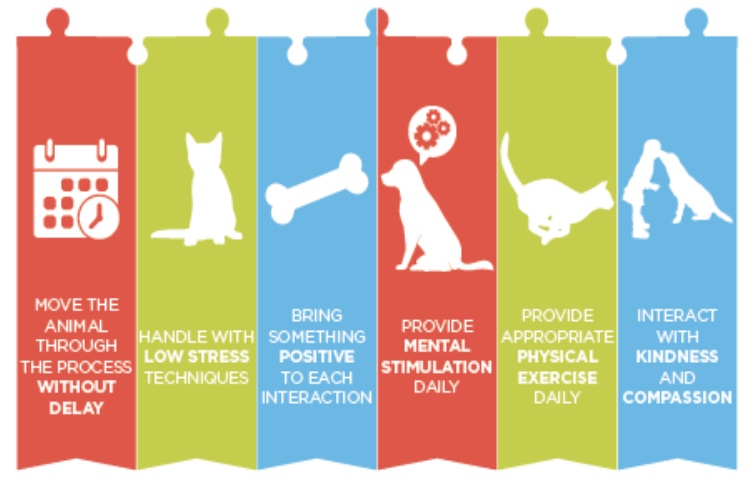News, ideas & inspiration from industry leaders

5 Cool Things About Arizona Humane’s Animal Experience Program
Arizona Humane Society takes in about 16K animals every year—and their most vulnerable dogs and cats tend to have a longer stay at the shelter. With a strong focus on enrichment, the Phoenix agency’s Animal Experience program supports a pet’s transition from shelter to home by overcoming such common shelter challenges as behavior decomposition and limited resources. Listen to a short webinar about this innovative program, and read on for highlights.
Animals are customers, too
AHS has a strong customer service program, with a goal of EEET—an Excellent Experience Every Time. “But we also realize our second group of customers are our animals,” says AHS’ Linda Anderson, Senior Manager of Animal Care & Experience, “so the aim of our Animal Experience program is to translate our goal of an excellent experience for people.”
Cats can eat—or play with—their food
Cats in shelters have limited control of their environment (highly stressful!), so AHS endeavors to offer the felines in their care as many choices as possible. But when some of the kitties started playing with the scrambled eggs they were given as food enrichment instead of eating them, at first staff thought the idea was a bust. After discussing the issue and realizing the cats were having great fun throwing them around, shares Anderson, “We kept them on the menu as food item or toy.”
They have an in-kennel disco
AHS works hard to offer sensory enrichment that touches on all five senses. Some inexpensive ways to engage dogs and cats include:
- Bubble machine (“A one-time investment of less than $15!” says Mik Moeller, Animal Experience Liaison)
- Wind chimes
- Disco balls
They also regularly scout dollar stores and thrift shops for toys and other items that can be used for safe enrichment. What’s especially great is that many of the items can be sanitized and reused.
They make it easy
AHS takes time and care to ensure all materials and enrichment items used in the Animal Experience program are clearly labeled, with signage and instructions that are easy to understand. “That’s where our enrichment baskets come in,” says Anderson. “They’re prepared ahead of time and contain all five sense activities, so that anyone, staff or volunteers, can just come in, open the cabinet, grab the basket and go!”
It’s a no-barking zone
It’s no secret that shelters are noisy places. Studies show sound levels in shelters can regularly exceed 100 decibels, while anything above 70 is considered loud. But AHS is reversing the trend, and the measures they put in place to decrease barking and noise have resulted in a significant decrease in sound—an 8-point drop in decibels, to be exact. To help achieve this, all staff have treat bags handy, and they practice “smart kenneling.” “If dogs kenneled next to each other are causing distractions,” explains Anderson, “we move them to a kennel where they aren’t so reactive.”
More from The Association’s Innovation Bank
Cool Collab: ECU’s Shelter Dog Walking Program
3 Steps to Finding Your Org’s Core Values
East Bay SPCA’s 4 Easy Ways to Start an Integrated Care Program




